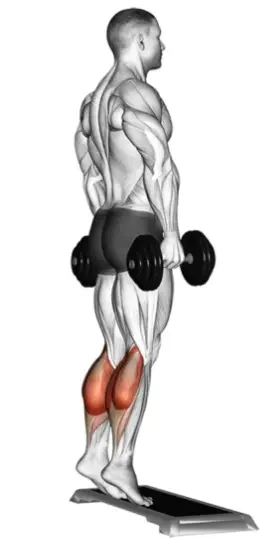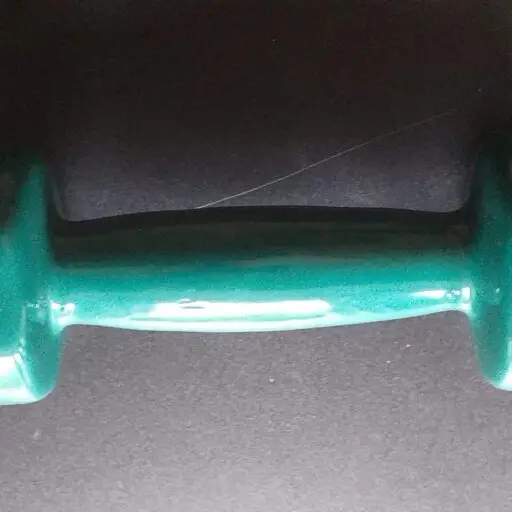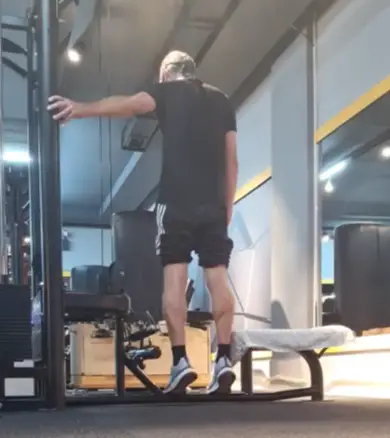All about the Standing Calf Raise
(Legs)
BENEFITS & MUSCLES WORKED: Ankle & Achilles Stability, Balance
Posture, Injury Prevention
START POSITION: For the Standing Calf Raise, there are two main types: specific Machine or Freestyle. The image shows Freestyle. You need to find a small ledge somewhere that allows you to rock up and down on the balls of your feet, thereby giving a full ROM stretch to the Calf and Achilles. Probably you also need some means of stabilizing yourself out to the side, as shown.
NOTES: Difficulty Rating: 50%
With your heels on the floor, push up from the feet until you cannot rise further. Hold the position at the top for about a second (isometric pause) and then slowly lower back to the Start—no need to pause at the lower end. Keep the rest of your body still and your knees locked. Don’t lean back, and avoid using your arm to help lift.
The Calf Raise is an often-overlooked exercise, but it’s crucial for athletes. The Calf muscle is a large muscle that does a lot of work, particularly in activities like walking and running. The quadriceps are the Largest and most powerful muscle in the human body. The Glutes and Calf muscles are both very close to second place, depending on the individual’s athletic training. Therefore, if you have weak calves, your overall athletic performance will be subpar. You cannot strive for athletic perfection without working on your calf muscles.
It depends on the athlete’s individual goals, but most people find it makes sense to train the Calves close to the end of a gym session. My Mojoh Method promotes Calf Raises as part of a general Finish Routine partly because the Quads and Glutes should be trained first (they are often bigger muscles for less roundly trained people), and partly because the Calves can be taught a little more often than the big powerhouses of Quads, Glutes, Chest, Shoulders, and Back.
Why? I’m not entirely sure of the scientific reason, but I acquired this esoteric knowledge through years of trial and error. How you train the Calves, and how often you train the Calves, depends on how strong they are and how much effort you are putting into the other muscle groups. Abdominals are also good ‘Finisher’ exercises, but the Calf Raise would come before the Abs – these are always the last thing you do in any Gym session.
There are many variations of the Calf Raise. If you are lucky, your Gym will have a dedicated Standing Calf Raise machine. You can also use a Leg Press Machine if it is suitably adjustable – by balancing the balls of your feet on the lower edge of the footplate.
More Calf Raise examples:

Seated Calf Raise

